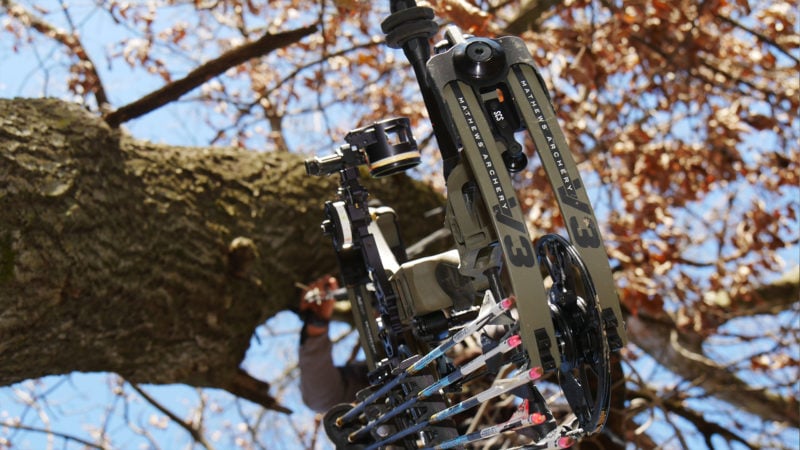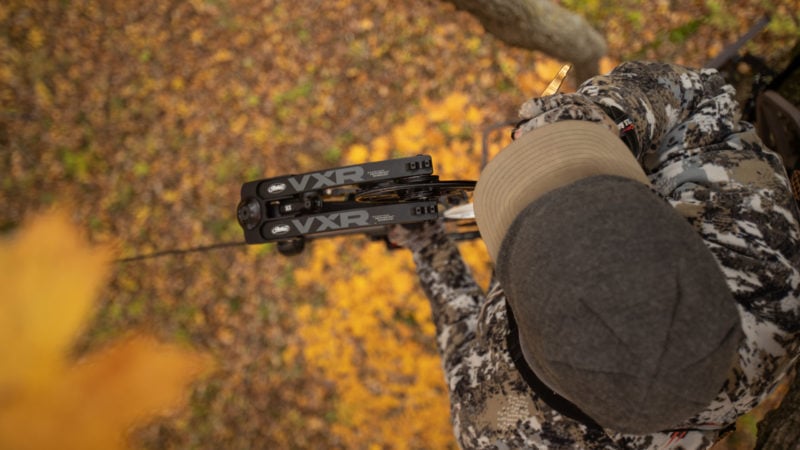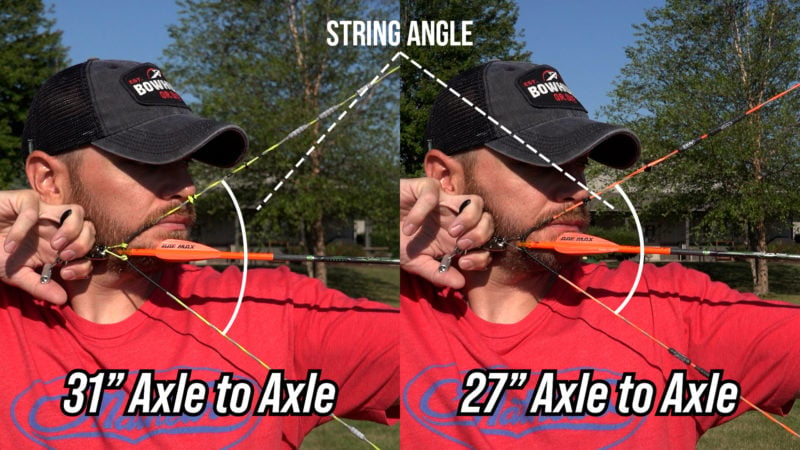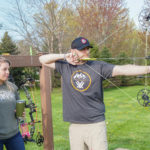Over the past few years, we’ve seen many flagship bows released with a “long” axle to axle version, as well as a “short” axle to axle version. In the video below, Justin goes over the pros and cons of long and short axle to axle bows.
What is Axle to Axle Length?
The “axle” of a compound bow is the piece that holds the cam in place between the limbs. Every compound bow has 2 axles, so the “axle to axle length” is the distance from one to the other.
We’ve recently seen some bow manufacturers use the axle to axle length in the actual name of some bows. For example, the new Mathews V3 27 & V3 31 have 27″ and 31″ axle to axle lengths, respectively.
For today’s standard, an axle to axle length of around 30 to 33 inches is just about average. Some companies are releasing shorter bows for better speed and maneuverability, as well as longer bows for better stability and for the archers that have a longer draw length.
Looking back 20 to 30 plus years ago, most bows had a shorter riser and long limbs, often reaching axle to axle lengths of 40 inches or longer. But as risers have gotten longer and limbs have gotten shorter, we’ve seen average axle to axle lengths start to creep down.

Pros & Cons for Both
Longer axle to axle bows have been the bow of choice for target archers for quite some time now. Just look at any indoor target archery competition and you’ll see bows with axle to axle lengths of 40″ to 48″ or more.
When someone says that a bow with a longer axle to axle length is more forgiving and better at longer distances, there’s definitely some validity there. When it comes down to centimeters or even millimeters to determine a winner in competition, you definitely want the most stable and accurate bow possible.
Then again, target archery and bowhunting are completely different animals. Target archers are typically shooting light arrows and a lower draw weight. They also have a lot more room to work with compared to a ground blind, for example.
In a hunting situation, your max shot distance on a whitetail deer should be about 40 yards. On average, most shots on deer are typically taken at 20 yards or less. So being able to hit a small “X” over and over again at a further distance is not too important for a bowhunter.

What a hunter wants is a bow that’s easy to move around in a stand or blind, and is fast enough to hit where he’s aiming before the deer has time to jump the string.
Speaking of the average archer, the difference between a 27 inch bow and a 31 or 32 inch bow, is not very noticeable. It all comes down to what fits you, and feels the most comfortable to you.
Biggest Differences Between Long & Short Bows
While a 3 or 4 inch difference in axle to axle length might not have a very distinguishable feel to the shot, the biggest difference you’ll notice is the string angle. String angle is the angle at which the string is at when drawn back.
A 29″ draw length on a 27″ axle to axle bow will have a more severe string angle than the same draw length at a 30″ axle to axle bow. So if you’re changing things up and switching to a shorter or longer bow, there’s a good chance that your anchor points will be a little different. That’s why it’s important to find what suits you best.

Best Bow For Different Hunting Styles
Another thing to take into account when looking at a bow, is what category of hunting do you fall into. Are you a treestand only guy, spot and stalk hunter, or a ground blind/box blind person?
Shorter axle to axle bows tend to be more beneficial in hunting scenarios due to the weight and maneuverability. Whether you’re a spot and stalk bowhunter out west, or are a tree saddle/public land guy in the midwest, having a more compact bow is probably best for you.
Conclusion
Like we said earlier, the difference between a 27″ axle to axle bow and a 31″ axle to axle bow isn’t very negligible. However, in a hunting scenario, a half inch can make all the difference between making a great shot on a booner, and hitting your limb on the top of your blind and sending your arrow into the distance.
The key is to find your sweetspot. If you hunt in the mountains out west and don’t mind lugging around a 33″ axle to axle bow, go for it! Don’t let anyone tell you what’s best for you, but take our info into consideration the next time you’re shopping for a new bow.

 By
By 



